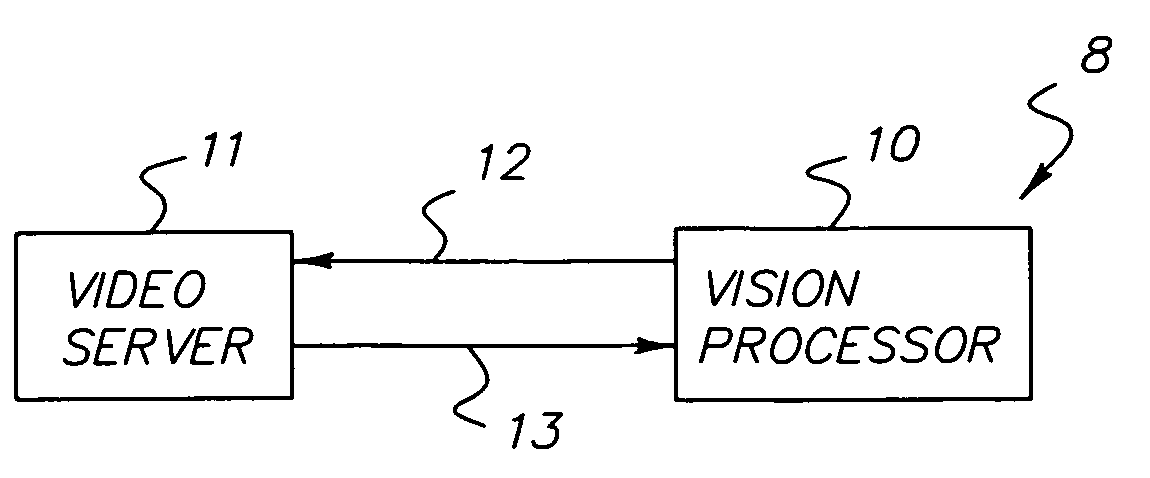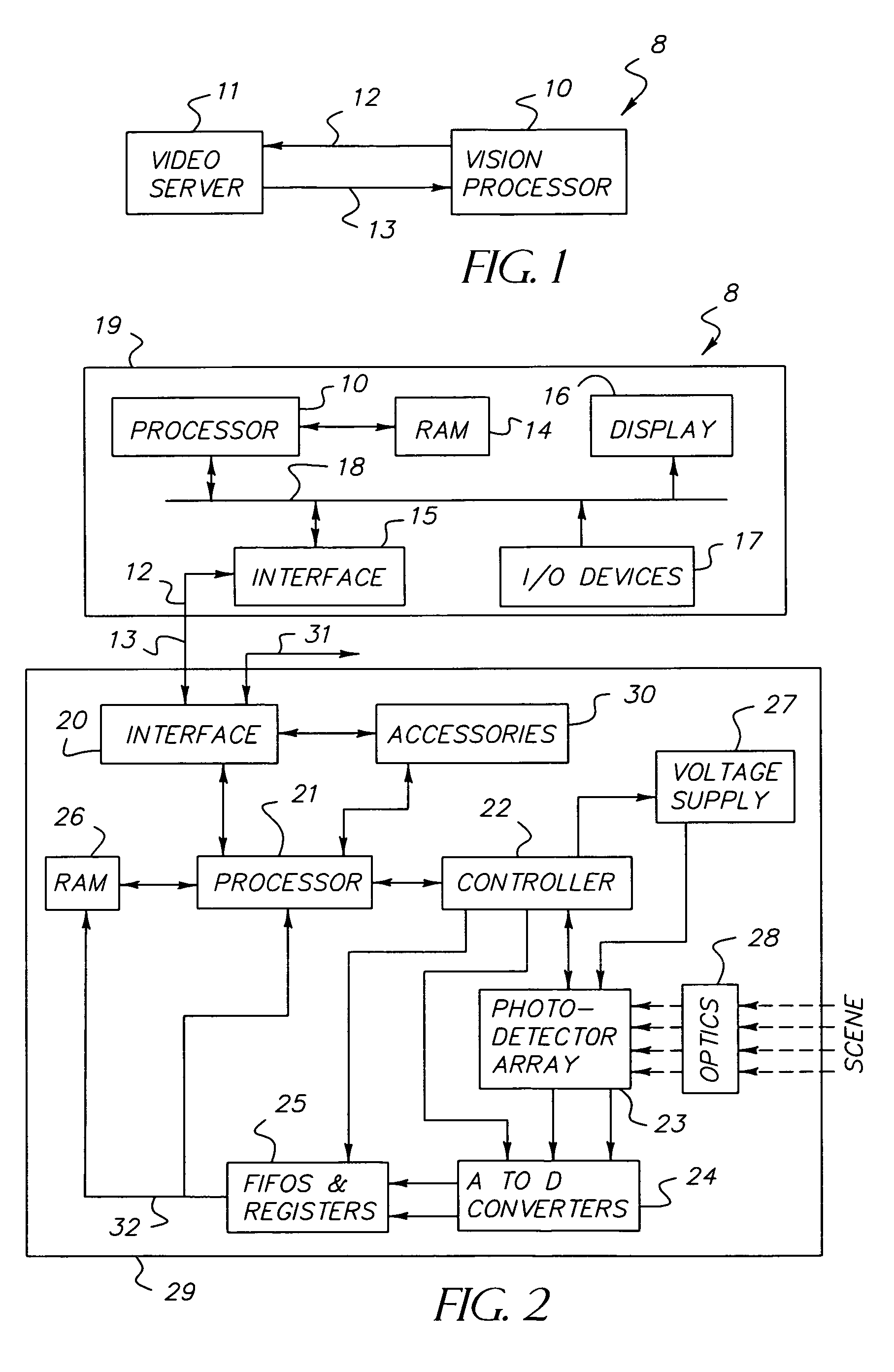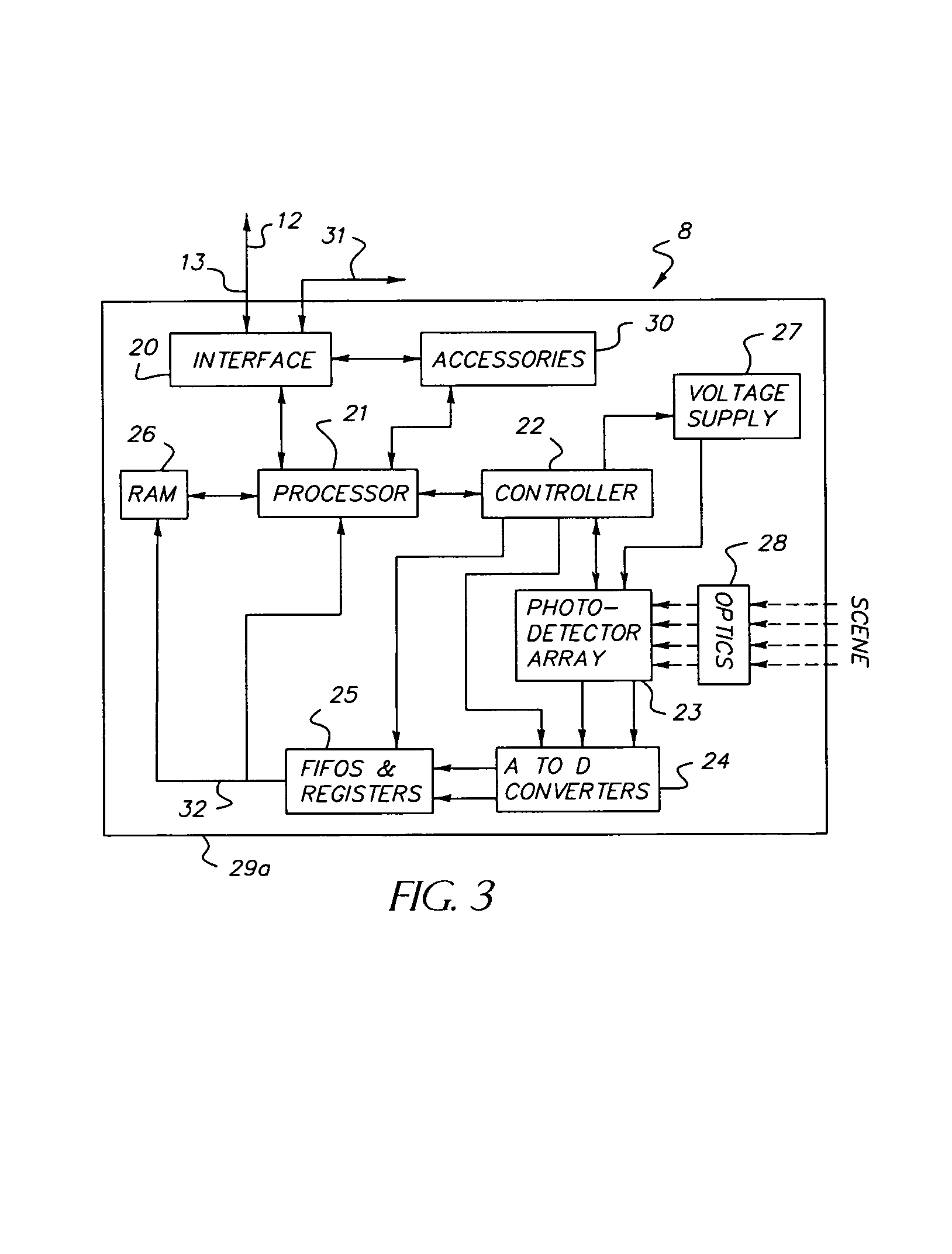Dynamically reconfigurable vision system
a vision system and dynamic reconfiguration technology, applied in the field of vision systems, can solve the problems of high cost, high power consumption, complex equipment, etc., and achieve the effect of efficient use of bandwidth and data processing resources
- Summary
- Abstract
- Description
- Claims
- Application Information
AI Technical Summary
Benefits of technology
Problems solved by technology
Method used
Image
Examples
Embodiment Construction
[0029]Referring to FIG. 1, a block diagram of the essential components of the DRV system 8 of the present invention is shown having two major modules: a reconfigurable video server 11 (typically embodied as a reconfigurable photodetector array within a video camera) and a vision processor 10. These two components are connected in a closed-loop, client-server relationship. A server represents an object that is waiting to be contacted by a client object so that the server can do something for the client. In DRV system 8, the server 11 is the reconfigurable photodetector array 23 in the video camera 29 and the client is the vision processor 10. The client vision processor in the computer 19 is programmed to generate commands, known as window request commands, that specify the spatial and temporal requirements (characteristics or configuration) of the video to be sensed on the reconfigurable photodetector array 23 in the video server 11. These window request commands are transmitted to ...
PUM
 Login to View More
Login to View More Abstract
Description
Claims
Application Information
 Login to View More
Login to View More - R&D
- Intellectual Property
- Life Sciences
- Materials
- Tech Scout
- Unparalleled Data Quality
- Higher Quality Content
- 60% Fewer Hallucinations
Browse by: Latest US Patents, China's latest patents, Technical Efficacy Thesaurus, Application Domain, Technology Topic, Popular Technical Reports.
© 2025 PatSnap. All rights reserved.Legal|Privacy policy|Modern Slavery Act Transparency Statement|Sitemap|About US| Contact US: help@patsnap.com



